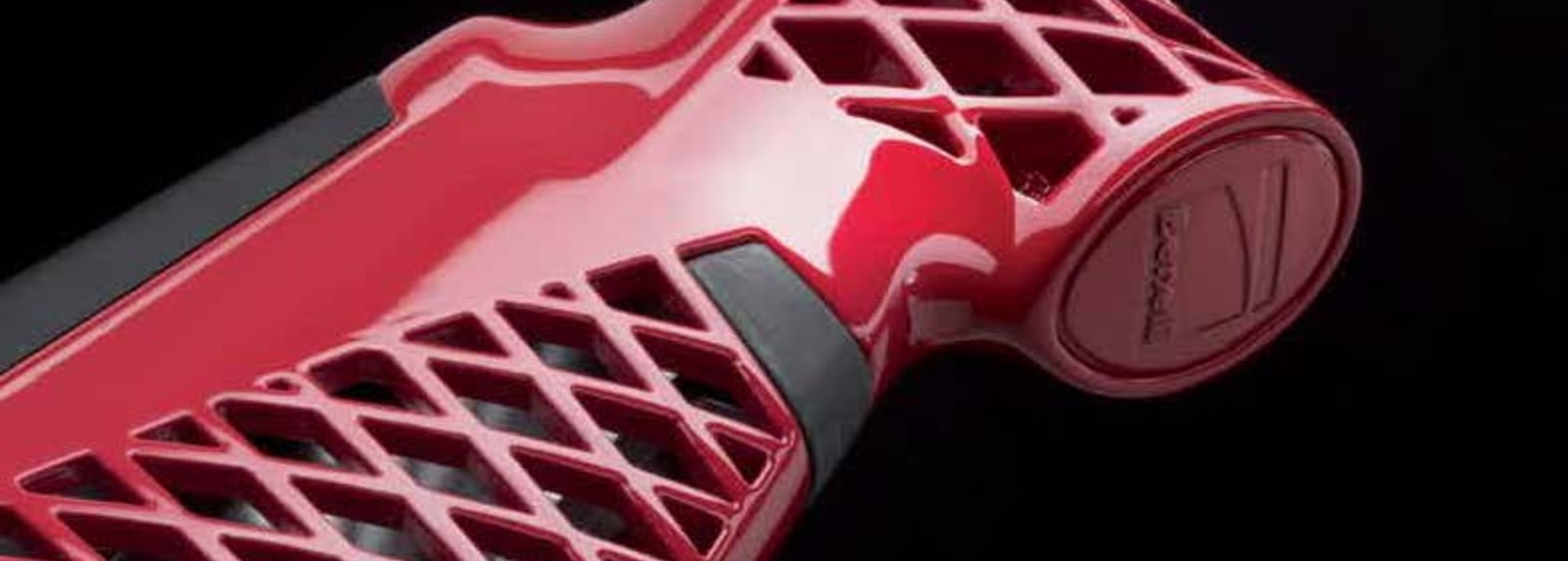Simply genius
Concept guns 2012
The new, high-tech Vinci shotgun is not only extremely innovative, but in many respects revolutionary in content and materials. Its design is dictated by functionality, ergonomics and decisive character. Its looks are refined, clear-cut, fully integrated and aggressive, as is only right for a modern semiautomatic. Conceived for simplicity and modularity, the Vinci has dealt with and completely eliminated all the criticalities typical of conventional self-loading shotgun designs.
Just like concept cars, concept guns are intended to highlight new capabilities. They are demo models that contain technology soon to be transferred to production models, along with features intended to test the market’s response to technical and stylistic developments that, if popular, could be refined into new solutions for future implementation. In many ways, because of its innovative and trail-blazing design, the Vinci itself can be seen as a concept gun around which a whole family of successful shotguns is being developed.
The man responsible for the Vinci’s styling is architect Marco Gaudenzi, assisted by Benelli’s own engineers. With the support of the Benelli design department, Gaudenzi has also created the designs for the Nova, the Argo rifle and the new-look Raffaello and Montefeltro shotguns. It was only logical for Benelli, therefore, to look once more to Gaudenzi’s creative genius when the decision was taken to develop a series of concept guns for 2012. The design team’s mission was to take the Vinci as its starting point and to impress and provoke the market by developing new stylistic and technical features that could form the basis for further development if they were to meet with sufficient approval.
Marco Gaudenzi’s colleagues in this venture were Takeo Hosoe (Benelli’s Art Director) and the staff of Benelli’s own testing and R&D departments, who function within Benelli in much the same way as Skunk Works do for Lockheed. Within the Lockheed organisation, Skunk Works is the experimental division that created legendary aircraft like the U2, SR71 and F117 (produced in limited series by Skunk Works itself). Perhaps more importantly, Skunk Works has been responsible for much of the testing that has exponentially accelerated the progress of aviation engineering between the Second World War and the present day. In the same way, Benelli’s R&D and test departments represent more than an “ideas factory” dedicated to basic research and to the testing of the new concepts developed at Urbino. Their secret rooms are home to the people who turn ideas into reality and develop experimental prototypes, modifications and new parts too.
Gaudenzi’s leitmotif in the concept gun project was one of aesthetic refinement and functional improvement. The result is four highly original shotguns that stand out for reduced weight and for the addition of leather inserts that ennoble their appearance and offer the shooter an extremely pleasant tactile sensation. The use of leather, colours (like Ferrari red) and hand-crafted finishes unusual in the field of firearms are clear indicators that these concept shotguns are pure Italian products, creations of a school of design in which taste and elegance are characterised by creativity, prestigious materials and a blend of advanced technology, class and nobility that only the most skilful master-craftsmen can achieve.
Benelli’s 2012 concept shotguns are intended to do more than impress the market: they are more than elegant provocations. Their purpose is to create a focus capable of testing the market’s response to the use of original and innovative ideas in a sector which has always been – and always will be – heavily influenced by tradition. Benelli’s four 2012 concept shotguns are clearly and purposefully intended to provoke debate around formal and stylistic features that have little in common with standard production models. In addition to their radically innovative looks, however, they also contain technical elements that could well form the basis for future development and even be implemented on Benelli’s production models. Benelli’s 2012 concept shotguns incorporate some important changes to key components.
The front part of the receiver (what would be the fore-end of a conventional shotgun) has been completely restyled. The Vinci’s receiver is designed to permit rapid repositioning of the hand whenever the user needs to change his shooting method and grip quickly. On these concept shotguns, the receiver is better suited to spontaneous firing, following fast moving targets, and combating muzzle climb when multiple shots are fired in rapid succession. This new “fore-end” could prove ideal for use on lighter-than-average shotguns. In fact, Benelli’s 2012 concepts guns also include a number of other developments adopted to reduce weight. First and foremost of these is a new, light alloy bolt unit, fitted to one of the models instead of the Vinci’s standard steel version. Thanks to its brushed finish, the light alloy bolt unit does not look any different to the steel versions fitted to the other concept guns. It nevertheless gives a significant saving in weight and also shifts the gun’s centre of gravity. Even on the versions with steel bolt units, the centre of gravity has been shifted by modifications to the stock and to the part that we still have to call the “receiver” for legal purposes even though in reality its principal function is that of trigger release.
Though the reduced weight and shifted centre of gravity of these concept guns are hidden features, they are of great importance. Whoever examines these shotguns closely can easily see the distinction between stylistic elements selected to draw attention, provoke debate, and suggest future directions, and technical improvements that could realistically find their way into future production models.
The Vinci itself was designed from a blank sheet. The only input given to the design team was that the new shotgun was to have inertial release geometric locking with a rotating bolt, i.e. the typical Benelli locking system. This not only guaranteed exceptional reliability, robustness and durability but also represented the best way to achieve another two of the Vinci’s design requirements: modularity and maximum simplicity. Form and function went hand in hand throughout the development of the Vinci. The Benelli locking system was modified and further improved (meriting one of the shotgun’s four patents). To use a metaphor from the world of car design, the “engine” and “body” were designed as a single unit. In fact the concept behind the Vinci is more organic than mechanical: the Vinci is an integrated unit and not as the sum of its individual parts. Creating complex designs is relatively easy. It is far more difficult, and even requires a touch of genius, to create beautifully simple designs. Nevertheless in the long run, simplicity is more productive for a number of reasons. For a start, simple designs are easier to perfect. And perfection means less user fatigue (in all senses of the world). This in turn means higher levels of safety and performance. To put it in a nutshell, simplicity means greater safety and better overall performance.
Given the advanced design of the Vinci, it was clear that improving it would be no easy feat. Changing the Vinci inevitably risked upsetting the delicate balance that is such an important feature of this shotgun and that pervades its style and its technology. In these 2012 concepts, Gaudenzi and his team have not only created the provocative styling asked of them, but have achieved the almost impossible task of improving on an already near-perfect original.
Benelli Armi International
 Benelli Belgium by BLIKI
Benelli Belgium by BLIKI


